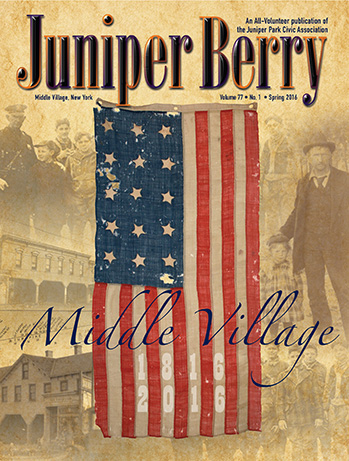Few joys can bring a smile to a child’s face faster than a horse. Perhaps that explains why as adults, dreamlike, the horse glides through our psyche, of elegance and wind, a symbol of companionship, beauty and speed, power and strength. Many of us experience a “spirit of freedom” through moments shared while astride one of these magnificent animals.
Nevertheless, some activists lose track of reality and confuse horses with unicorns that must be rescued, removed from cities to magically roam the forest and one day graze in Elysian Fields. Horses are bred for work, and many are well suited to pull carriages at Central Park.
A Bit of Horse History
Almost all horses are domesticated. Only one small wild Asian subspecies survives today, its ancestor becoming extinct in 1909.
Beautiful and dramatic, epochal photos depict Native Americans and their “wild” horses, horses brought by the Spanish in the early 1500’s that within a couple of hundred years dispersed across the continent. Since there were no Pre-Columbian horses in the Americas, the term “wild” is a misrepresentation for feral horses, colloquially known as “Wild Mustangs.” These new animals were environmentally problematic for tribes that foraged for survival where horses competed for local foods. Contrarily, the horse was an unparalleled aid for warrior tribes that could now also hunt buffalo and deer on a larger scale. Across the world today, there exist about 350 breeds of horses and ponies.
The Road for Most Horses
No longer the mainstay of transportation for people and goods, the horse still holds a place in modern society. Draft horses still plow small fields where farmers do not use mechanized equipment. And cross-breeds of draft horses that do not “spook” easily by city noise are selected for Central Park carriage work. Horse racing also remains popular across the nation, and those that can afford to maintain a horse receive great joy from them. However, owning a horse is expensive and “If you have to ask how much it costs to take care of a horse, you cannot afford one.” For many, riding stables and farm visits have become the primary way to experience the wonder of horses and perhaps petting the occasional mounted police horse. In addition, lesser known are the therapeutic physical and emotional benefits that horses offer. Caring for horses for over 60 years, aficionado Fran Alala attests to the proverb, “The outside of a horse is good for the inside of a man,” and refers to hippo-therapy, particularly for children with disabilities.
[More info in this is available at Gallop NYC: tinyurl.com/gallopnyc]
End of the trail is unhappy
for majority of horses
After being a major part of NYC commerce for over a hundred years, glue factories no longer dot the shores of Brooklyn or occupy remote locations like Barren Island, but the fate of most horses remains the same. In the USA the death rate for horses is around 150,000 per year. With a 30 year lifespan, the relatively short 3 year career of most racing horses means auction at a kill pen, and shipment to Mexico, Canada and Europe for human consumption. Animals that cannot be processed by modern quick-killing slaughterhouses can wind up in the Mexican “mom-and-pop” slaughter industry where methods of killing include cruel spine severing and other horrors. A few former champion racehorses can wind up as expensive dinner specials in Sweden and Japan. Death by natural causes, and euthanasia (the chemicals making the meat no longer safe for pet food), relegates those equines to being processed with cattle hooves, bones and other byproducts to make leather and glue. More likely, the horses end up in a New Jersey landfill since the 1000-2000 lb. carcasses cannot be buried under the front lawn with the cat.
The Better Path of a
Central Park Carriage Horse
Despite the protests of the uninformed, the Central Park horses are not being tortured. The livelihood, visibility, and public scrutiny make it common sense to treat horses well. Naturally, no civilized person should tolerate animal abuse whether it is in the form of stuffing a sponge up a racehorse’s nose to affect race outcomes or violating carriage rules and regulations. But there are people who do not know anything about horses, yet demand they know what is best for them. Lacking the sense of talking horse Mr. Ed, our Lone Ranger Mayor “Hi-Ho” de Blasio seems to believe the city is holding Pegasus in chains. His cavalry includes followers that imagine the multitude of humanity can be easily fed and wars abolished if everyone would just grow tomatoes in their backyards and herbs on their windowsills, leaving horses to freely frolic in the wilderness.
The true, compelling reason for Bill to send the horses off to the “soap” factory: Once the mayor’s realtors and connections usurp the stables, they will gain blocks of valuable Hell’s Kitchen property along 11th Avenue. A deal had supposedly been reached that would move the stables into the park, saving only half of the horses and related jobs, a clear “exchange” for freeing up the former valuable property. But the unions balked and the City Council announced they were dropping the matter. At least for now.
In reality NYC carriage horses are well treated. They receive proper veterinary care, escape cruel deaths and the dinner plate, and they vacation and retire to a pasture in Pennsylvania. Unlike the mayor who fancies we must transform Horse Carriage Drivers into green cabbies, reasoning New Yorkers realize that horses continue to provide employment for many associated industries from tourism to horseshoes as well as bring joy and appreciation for generations.
**The views expressed in this column represent only those of the author and not the board or membership of the Juniper Park Civic Association.




